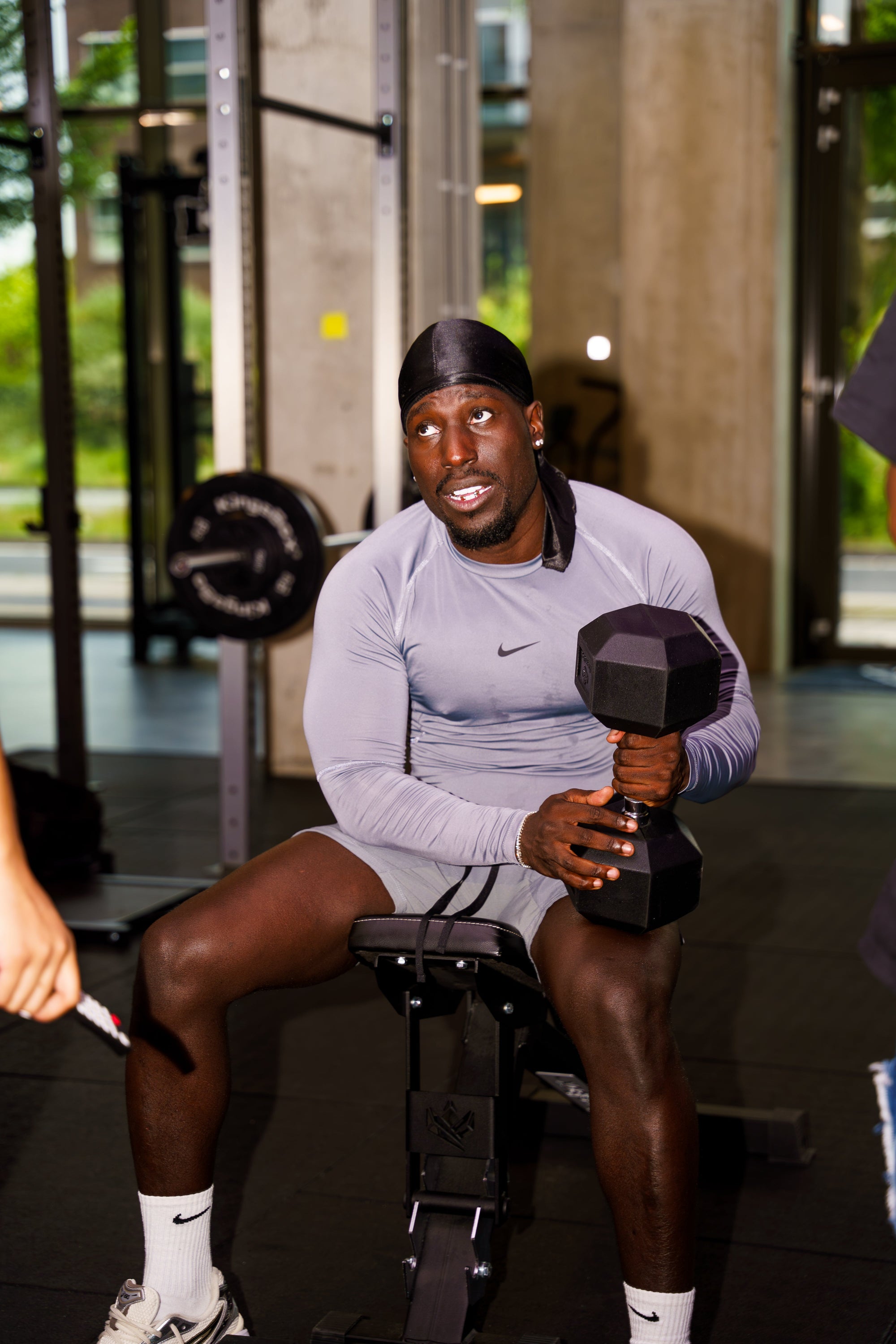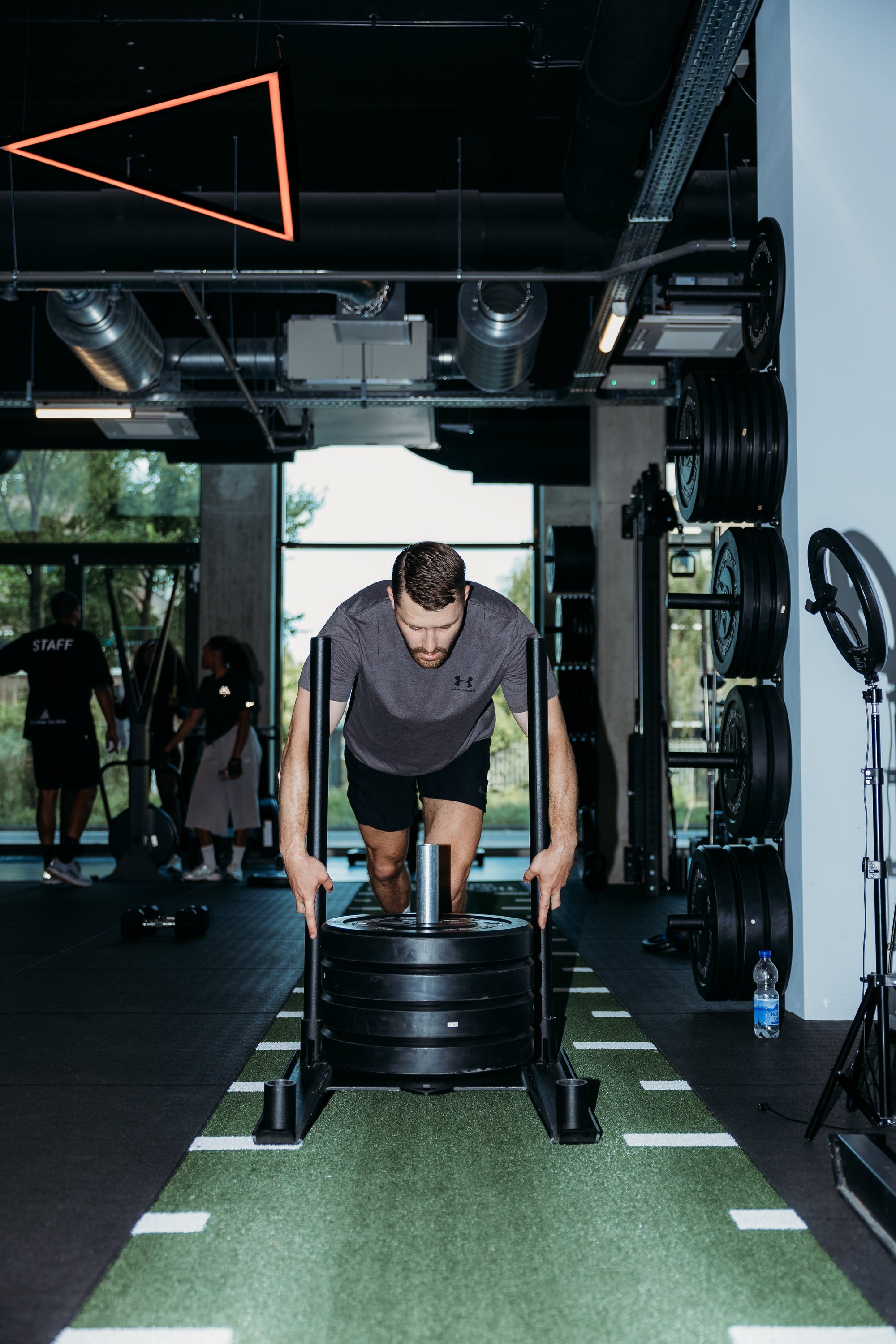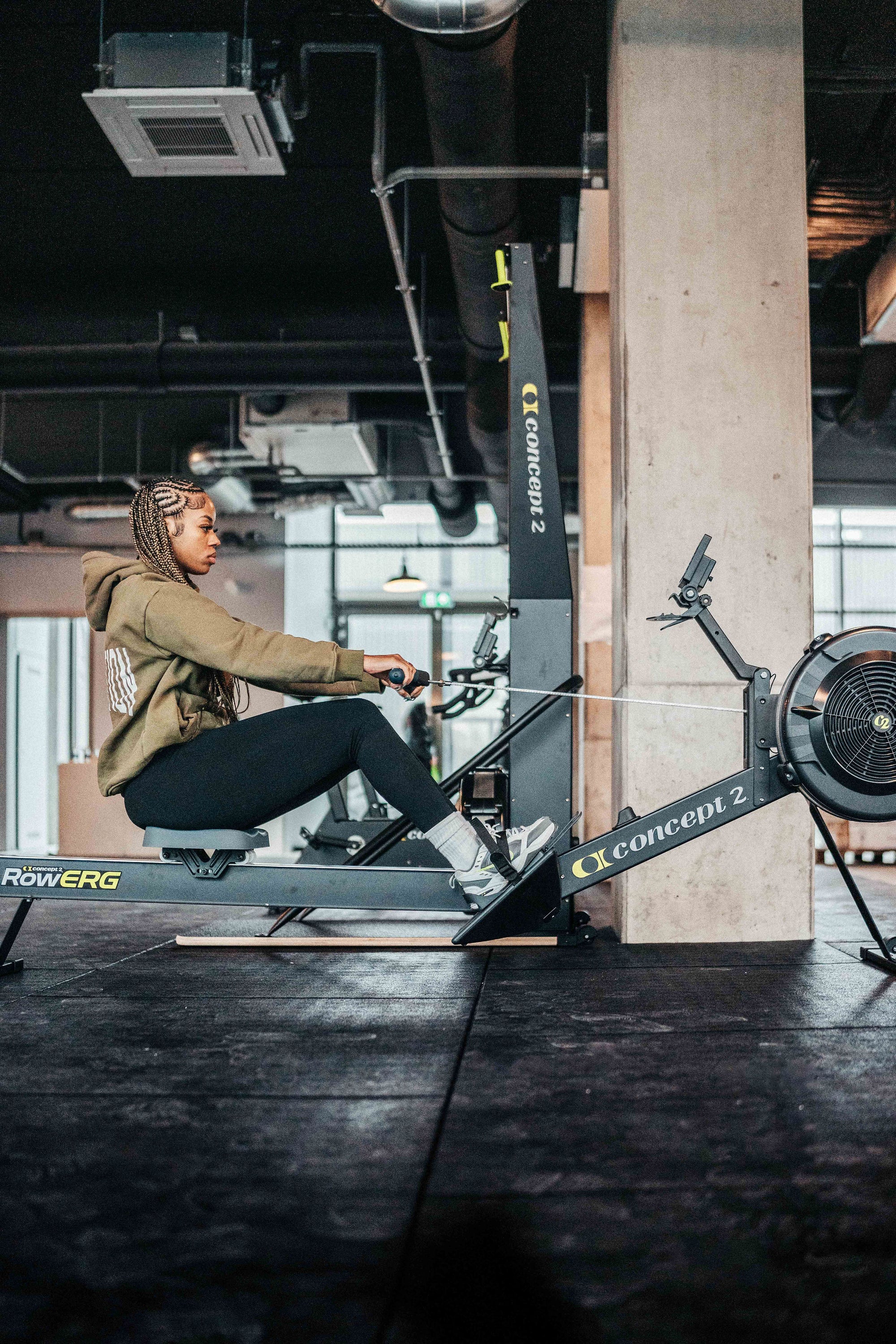Event Safety in Hyrox: Tips and Best Practices for a Secure Competition Experience
Champion, nothing is more important than ensuring your safety while pushing your limits. Whether you’re a seasoned Hyrox competitor or stepping into the arena for the first time, understanding and implementing proper safety protocols can be the difference between a triumphant finish and an avoidable injury. At BallinFit, where We make Champions, our head coach, Zwayder, emphasizes that a secure competition environment is built on thorough preparation, smart decision-making, and a vigilant mindset. In this guide, we’ll break down actionable safety tips and best practices to ensure you—and your fellow competitors—can perform at your best without compromising on security.
1. The Critical Importance of Safety in Hyrox Events
A. Physical Safety: Protecting Your Body
Hyrox events are designed to push you to your limits with high-intensity drills and dynamic movements. While the challenge is part of the thrill, it also brings inherent risks. Injury prevention should be a top priority.
- **Preventing Overuse and Acute Injuries:**Every sprint, wall ball, and sled push places stress on your muscles and joints. Overuse can lead to chronic issues, while sudden missteps might result in acute injuries.**Real-World Example:**At a recent competition, an athlete experienced a minor strain during the wall ball station because they rushed through their reps without proper form. After a session with Coach Zwayder, they adjusted their technique, which not only prevented further injury but also improved their performance.
B. Mental Safety: Keeping Focused Under Pressure
The mental strain of competing can sometimes lead to distraction or even panic. A clear, calm mind is essential for making safe decisions on the course.
- **Stress and Decision-Making:**High levels of stress can cloud judgment, increasing the likelihood of mistakes—like taking shortcuts or neglecting proper form.**Real-World Example:**One competitor, overwhelmed by pre-race nerves, skipped a crucial warm-up, leading to muscle cramps mid-race. Through mental resilience training and mindfulness practices advised by Coach Zwayder, they learned to manage their stress and approach each segment with clarity.
2. Pre-Event Safety Preparation
A. Comprehensive Training and Conditioning
Before race day, your training should not only prepare you for performance but also build a solid foundation for safety.
-
Technique and Form Mastery:
Regularly practice drills with a focus on form. For instance, perfect your wall ball squat-to-throw technique using video analysis.
Actionable Tip:
Schedule weekly sessions with Coach Zwayder to review your form and receive corrections that prevent injury.
-
Balanced Workouts:
Integrate strength, endurance, and flexibility training. This balanced approach ensures that no muscle group is disproportionately stressed, reducing the risk of overuse injuries.
B. Pre-Event Gear Check
Your equipment plays a crucial role in keeping you safe. Make sure you’re equipped with the right gear and that everything is in proper working order.
-
Quality Footwear:
Invest in high-performance training shoes that provide adequate support and cushioning. A well-fitted shoe minimizes the risk of sprains and joint stress.
-
Appropriate Apparel:
Choose moisture-wicking, breathable fabrics that prevent overheating and chafing. Compression garments can also reduce muscle vibration and provide extra support.
-
Recovery Tools:
Pack essential recovery tools such as foam rollers, massage sticks, and any personal protective gear (e.g., knee sleeves or wrist guards).
Real-World Example:
Before a major Hyrox event, one athlete discovered a tear in their training shoes during a final gear check. Thanks to this pre-event review, they replaced the shoes and avoided a potential ankle injury on race day.
C. Hydration and Nutrition Planning
Proper fuel is vital not just for performance but also for maintaining safety during intense physical activity.
-
Hydration Strategy:
Begin hydrating early on race day—aim for 500 ml of water about two hours before the event. Keep a water bottle handy during the race and plan for electrolyte intake if the event lasts over an hour.
-
Pre-Event Meal:
Consume a balanced meal that includes complex carbohydrates, lean proteins, and a small amount of healthy fats. Avoid heavy, greasy foods that could cause gastrointestinal distress.
-
Real-World Insight:
An athlete once experienced severe cramping during a Hyrox event due to inadequate hydration. After revising their pre-race nutrition plan based on Coach Zwayder’s recommendations, they noted not only improved performance but also fewer instances of cramping and fatigue.
3. On-Site Safety Measures During the Event
A. Venue Familiarization and Course Inspection
Arriving at the event well-prepared includes knowing your environment.
-
Venue Walk-Through:
Arrive early to inspect the course. Look for any hazards such as uneven surfaces, poorly marked transitions, or obstacles that could pose a risk.
-
Emergency Exits and First-Aid Stations:
Identify the locations of emergency exits, first-aid stations, and hydration points. Knowing these details in advance ensures you’re not caught off guard in case of an incident.
-
Real-World Example:
At a recent event in Amsterdam, organizers marked every potential hazard clearly and provided maps at the registration area. This level of detail reassured competitors, allowing them to focus on the race without worrying about safety logistics.
B. Crowd Management and Support
The energy of a Hyrox event is high, but so is the potential for overcrowding.
-
Designated Zones:
Organizers should establish clear zones for spectators, competitors, and staff. This helps prevent accidents and ensures that competitors have clear, unobstructed pathways.
-
Communication Protocols:
Ensure that there are clear communication channels (such as PA systems or digital alerts) for any safety announcements or emergency instructions.
-
Volunteer and Staff Training:
Event staff and volunteers should be trained in first aid and crowd control. This ensures that in the event of an emergency, help is readily available.
C. Personal Responsibility on Race Day
While event organizers handle many safety aspects, you also play a key role in your own safety.
-
Pace Yourself:
Avoid the temptation to overexert yourself at the start. Monitor your physical cues and adjust your pace to prevent burnout and injury.
-
Stay Aware:
Keep your head up during the race. Being aware of your surroundings helps you navigate obstacles and avoid collisions.
-
Follow the Rules:
Adhere strictly to the event rules and guidelines. Whether it’s staying within designated areas or following proper technique protocols, these rules are designed with your safety in mind.
4. Post-Event Safety and Recovery
A. Immediate Cool-Down and Stretching
After the race, your body needs to transition from high-intensity exertion to recovery mode.
-
Cool-Down Routine:
Engage in light jogging or brisk walking immediately after the race to gradually lower your heart rate.
-
Static Stretching:
Spend 10–15 minutes on static stretches targeting the major muscle groups used during the event. This helps reduce muscle tension and prevent post-event soreness.
-
Deep Breathing:
Incorporate deep breathing exercises to calm your nervous system and aid in recovery.
B. Post-Event Medical Check and First Aid
Even if you feel fine, it’s important to take a moment for a quick health check after a strenuous event.
-
Self-Assessment:
Look for any signs of injury or extreme fatigue. If you experience persistent pain, swelling, or dizziness, seek medical assistance immediately.
-
Professional First Aid:
Utilize the first-aid stations set up at the venue. Many events offer post-race massages or quick recovery treatments to help athletes stabilize and recover.
-
Real-World Example:
After a recent Hyrox event, one competitor reported minor knee discomfort. Prompt attention at a first-aid station helped address the issue early, preventing it from developing into a more serious injury.
C. Long-Term Recovery Strategies
Your recovery doesn’t end once the race is over. Long-term recovery practices are essential for sustaining your performance and preventing injuries.
-
Active Recovery Days:
Schedule low-intensity activities like yoga, swimming, or light cycling in the days following the event to keep your muscles active without overstraining them.
-
Nutritional Recovery:
Continue to focus on post-event nutrition with recovery shakes, balanced meals, and ample hydration to replenish lost nutrients and fluids.
-
Sleep:
Prioritize 7–9 hours of quality sleep each night to allow your body to repair and rebuild.
-
Follow-Up:
Consider a follow-up session with Coach Zwayder to review your performance and adjust your training plan based on any injuries or areas of discomfort.
5. Coach Zwayder’s Expert Tips on Event Safety
Our head coach, Zwayder, emphasizes that safety is the foundation upon which champions are built. Here are some of his top recommendations:
- Plan Every Detail:"Preparation is key—whether it’s reviewing your gear, understanding the course, or setting up your nutrition strategy. When you plan every detail, you minimize risks and boost your confidence."
- Listen to Your Body:"Your body sends signals. If you feel pain or extreme fatigue, don’t push through. It’s better to step back, assess, and recover properly than to risk a serious injury."
- Embrace Recovery:"Recovery is not an afterthought—it’s a critical component of training. Use every tool available, from foam rollers to proper sleep, to ensure you’re always at your best."
- Stay Informed:"Keep up with event updates and safety protocols. Understanding the logistics and potential hazards of the event environment can help you make safer decisions on race day."



